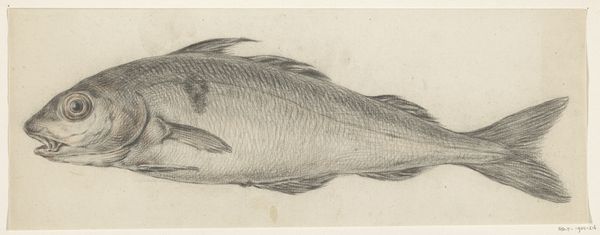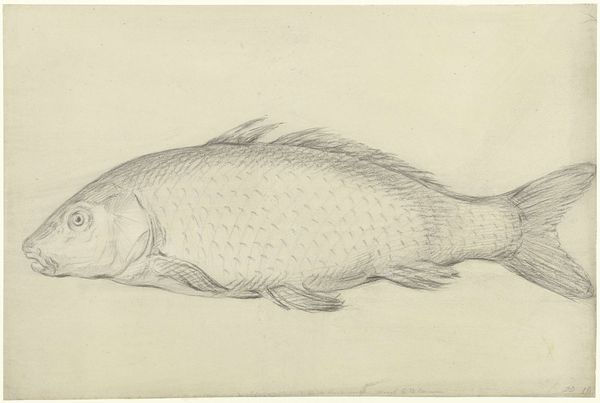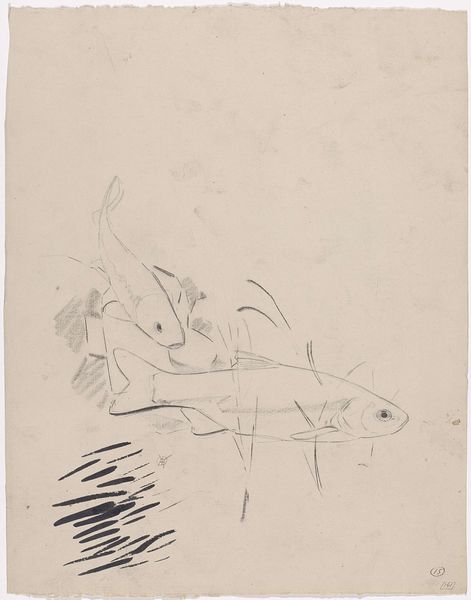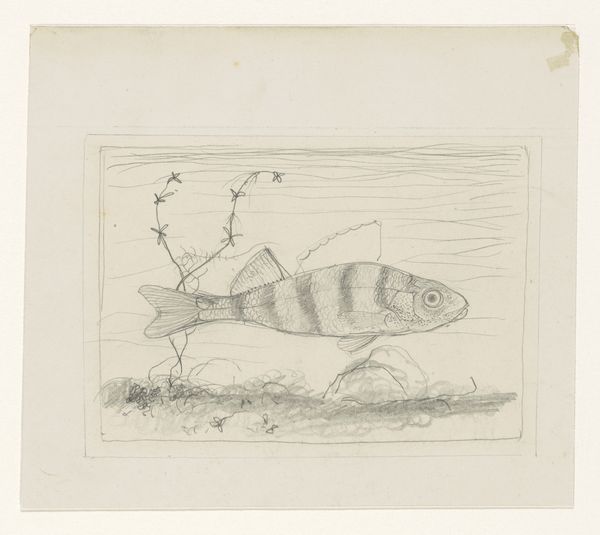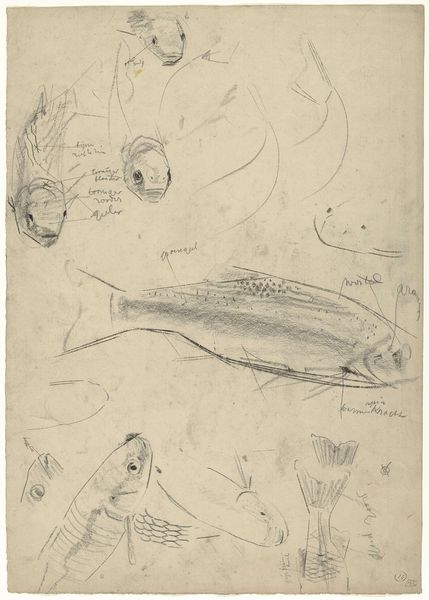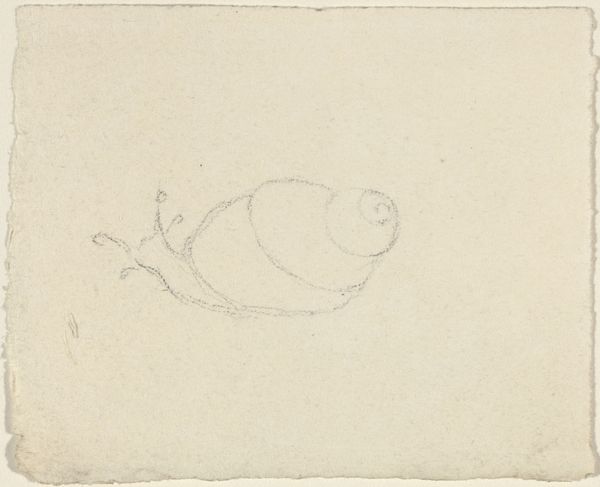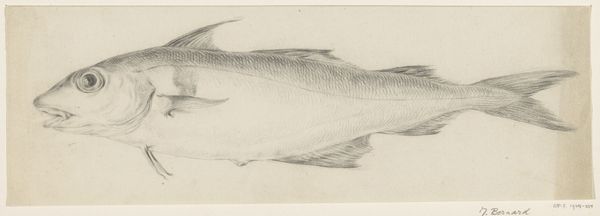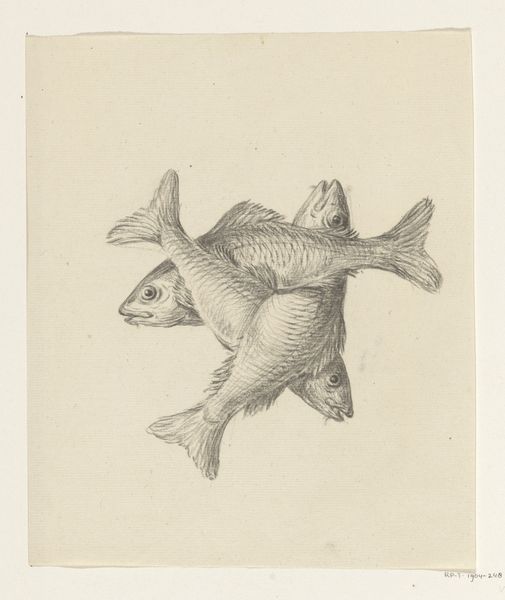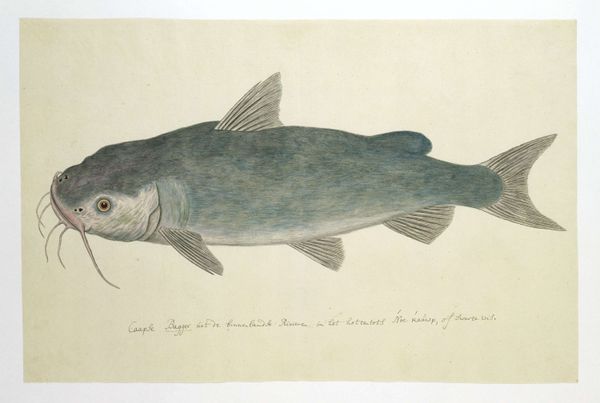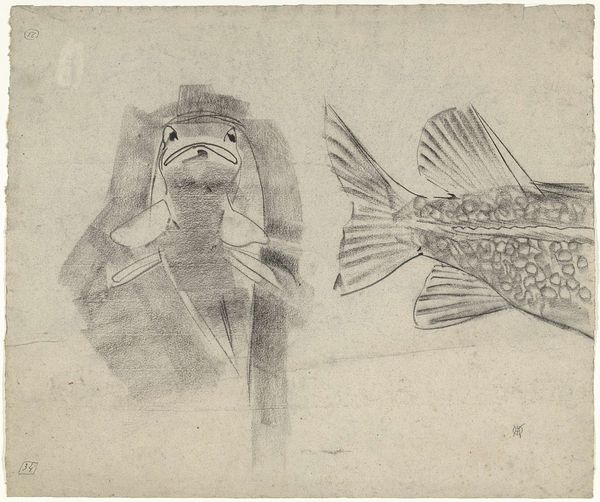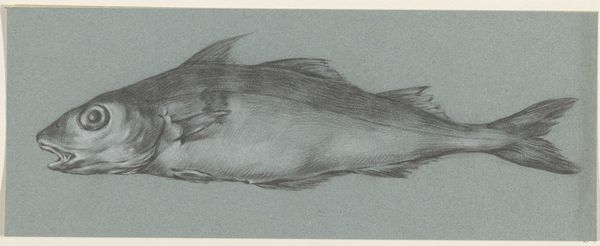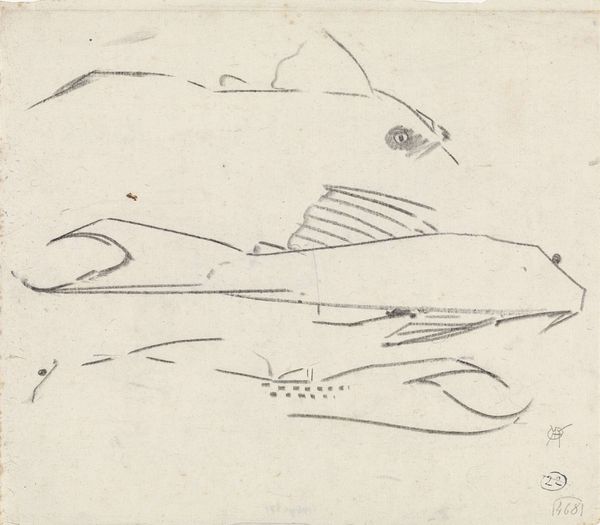
drawing, paper, pencil
#
drawing
#
figuration
#
paper
#
pencil drawing
#
pencil
#
limited contrast and shading
#
portrait drawing
#
academic-art
#
realism
Dimensions: height 660 mm, width 480 mm, height 345 mm, width 509 mm, height mm, width mm
Copyright: Rijks Museum: Open Domain
Editor: This is Robert Jacob Gordon's "Coracinus capensis (Galjoen)," possibly drawn between 1777 and 1786. It's a pencil drawing on paper and I find the simple lines and the almost scientific approach really calming. How do you interpret this work? Curator: It's interesting you mention "scientific." Think about the context: Gordon was a military commander and explorer, working for the Dutch East India Company. His drawings, seemingly objective records, are also products of colonial expansion. How do you see the act of documenting nature fitting into that history? Editor: That’s a great point. I guess I hadn't considered that the drawing could be tied to resource extraction or asserting dominance over the territory through cataloging it. So it's more than just a pretty fish, it’s also about power? Curator: Precisely. Think about the "academic art" style; it implies authority, a presumed universality. This wasn't just observing, it was claiming knowledge. Now, consider whose perspective is centered, and whose is marginalized by that approach. Who benefits? Who loses? Editor: I see what you mean. By framing the drawing as objective, it kind of erases the existing knowledge of the indigenous populations. They obviously knew this fish existed already. Curator: Exactly. This drawing becomes a tool, furthering a very specific agenda. Does this change how you see the calmness you initially perceived? Editor: It does, a little. There's still a kind of serenity in the line work itself, but understanding the context complicates that feeling. It adds a layer of responsibility for us as viewers, I think. Curator: Absolutely. It requires us to question whose story is being told, and whose is being erased in the process of creating a singular, "authoritative" record. Thanks for that insightful engagement! Editor: Thanks. I’ll never look at an old nature drawing the same way again.
Comments
No comments
Be the first to comment and join the conversation on the ultimate creative platform.
